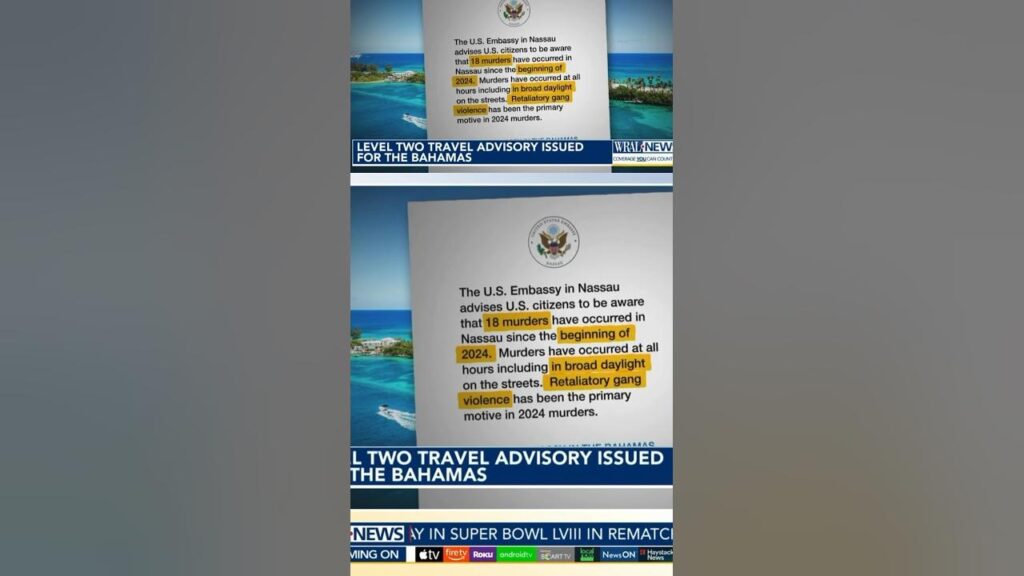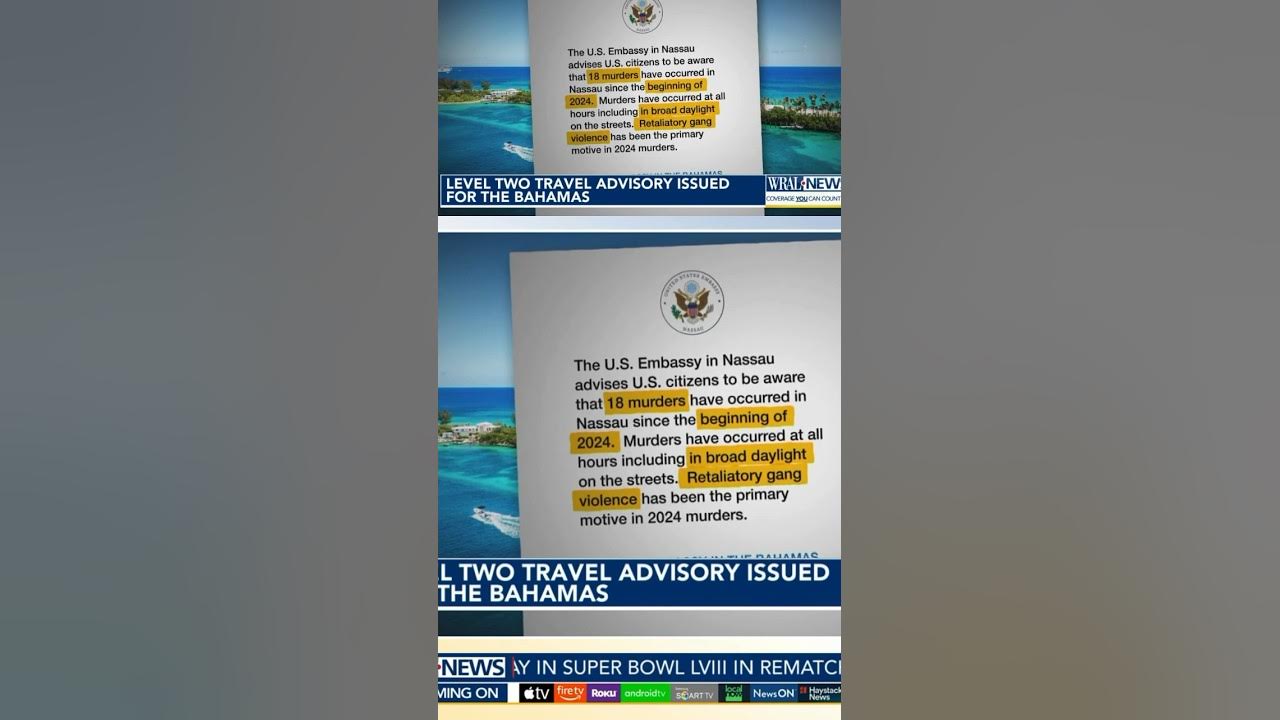
Navigating Travel: Understanding Level 2 Travel Advisory
Planning international travel involves numerous considerations, from booking flights and accommodations to researching local customs and attractions. However, one crucial aspect often overlooked is understanding travel advisories issued by government agencies. Among these, a Level 2 Travel Advisory warrants careful attention. This article aims to provide a comprehensive overview of what a Level 2 Travel Advisory entails, its implications for travelers, and how to make informed decisions to ensure a safe and enjoyable trip.
What is a Level 2 Travel Advisory?
A Level 2 Travel Advisory, typically issued by government entities like the U.S. Department of State, signifies an increased risk to travelers visiting a particular destination. Unlike a Level 1 advisory, which suggests exercising normal precautions, a Level 2 advisory urges travelers to be more vigilant and aware of potential dangers. This could stem from various factors, including but not limited to:
- Elevated crime rates
- Political instability
- Specific health concerns
- Potential for terrorism
- Civil unrest
It’s crucial to understand that a Level 2 Travel Advisory doesn’t necessarily mean a country is entirely unsafe. Instead, it highlights specific areas or situations where travelers should exercise increased caution. The advisory will often provide detailed information about the nature of the risks and specific locations affected. Travelers should regularly check for updates, as travel advisories can change based on evolving circumstances. Understanding the nuances of a Level 2 Travel Advisory empowers travelers to make informed decisions and take necessary precautions.
Interpreting the Advisory: Key Considerations
When a Level 2 Travel Advisory is issued, it’s essential to delve deeper than just the headline. The advisory document itself usually provides a detailed breakdown of the specific risks present in the destination. Here are some key considerations when interpreting a Level 2 Travel Advisory:
Specific Geographic Areas
Often, the advisory will pinpoint specific regions or cities within a country that are of particular concern. For instance, a Level 2 Travel Advisory might apply to border regions with known security risks or urban areas with high crime rates. It’s vital to determine whether your planned itinerary includes these areas.
Nature of the Risk
The advisory will outline the specific type of risk present. Is it related to crime, terrorism, health concerns, or political instability? Understanding the nature of the risk allows you to take targeted precautions. For example, if the advisory warns of petty theft, you might focus on securing your belongings and avoiding risky areas. If it concerns political unrest, you’d want to avoid demonstrations and monitor local news closely.
Severity of the Risk
While a Level 2 Travel Advisory indicates an increased risk, the severity can vary. The advisory document will often provide context to help you assess the potential impact. For example, it might describe the frequency of incidents or the potential consequences for travelers.
Recommendations for Travelers
The advisory will typically include specific recommendations for travelers. These might include registering with the government’s Smart Traveler Enrollment Program (STEP), avoiding certain areas, being vigilant in public places, and having a plan for communication and evacuation. Adhering to these recommendations can significantly reduce your risk.
Preparing for Travel Under a Level 2 Advisory
Traveling to a country with a Level 2 Travel Advisory requires careful preparation and a heightened sense of awareness. Here are some steps you can take to mitigate risks and ensure a safer trip:
Research and Stay Informed
Before your trip, thoroughly research the specific risks outlined in the advisory and monitor local news for any updates. Understand the cultural norms and customs of the destination, and be aware of potential scams or security threats targeting tourists. Knowledge is your best defense.
Register with STEP
The Smart Traveler Enrollment Program (STEP) allows you to register your trip with the nearest U.S. embassy or consulate. This makes it easier for the embassy to contact you in case of an emergency and provide you with important safety information. [See also: Benefits of STEP Enrollment]
Secure Your Belongings
Be extra vigilant about securing your belongings, especially in crowded areas. Avoid displaying expensive jewelry or electronics, and keep your wallet and phone in a secure pocket or bag. Consider using a travel money belt or a hidden pouch to store important documents and cash.
Avoid Risky Areas
Heed the advisory’s warnings about specific areas to avoid. These might include areas known for high crime rates, political demonstrations, or other potential dangers. If you must visit these areas, do so during daylight hours and with a trusted guide.
Be Aware of Your Surroundings
Pay close attention to your surroundings and be aware of any suspicious activity. Trust your instincts and avoid situations that make you feel uncomfortable. If you sense danger, remove yourself from the situation as quickly and safely as possible.
Have a Communication Plan
Establish a communication plan with family and friends back home. Let them know your itinerary and check in with them regularly. Ensure you have a reliable way to communicate, such as a local SIM card or a portable Wi-Fi hotspot. In case of an emergency, having a clear communication plan can be crucial.
Consider Travel Insurance
Travel insurance is always a good idea, but it’s especially important when traveling to a country with a Level 2 Travel Advisory. Make sure your policy covers medical emergencies, trip cancellations, and evacuation expenses. Read the fine print carefully to understand the coverage limitations and exclusions.
Respect Local Laws and Customs
Familiarize yourself with the local laws and customs of the destination. Avoid engaging in any activities that could be considered illegal or offensive. Respect local traditions and dress modestly in religious areas. Being respectful of local customs can help you avoid unwanted attention and potential problems.
The Impact of a Level 2 Advisory on Travel Plans
A Level 2 Travel Advisory can significantly impact your travel plans, potentially affecting your insurance coverage, travel arrangements, and overall peace of mind. It’s essential to understand these implications before making any decisions.
Insurance Coverage
Some travel insurance policies may have exclusions or limitations related to travel to countries with active advisories. Check your policy carefully to understand the extent of your coverage in the event of an incident. Some policies may not cover incidents that occur in areas specifically warned against in the advisory.
Travel Arrangements
Depending on the severity of the advisory and your risk tolerance, you may need to adjust your travel arrangements. This could involve changing your itinerary, avoiding certain areas, or even postponing your trip altogether. Consider the potential impact of the advisory on your planned activities and accommodations.
Peace of Mind
Traveling to a country with a Level 2 Travel Advisory can be stressful and anxiety-inducing. It’s important to weigh the potential risks against the benefits of the trip and make a decision that you feel comfortable with. If you’re feeling overwhelmed or unsure, consider consulting with a travel expert or a security consultant.
Making an Informed Decision
Ultimately, the decision to travel to a country with a Level 2 Travel Advisory is a personal one. There’s no right or wrong answer. The key is to make an informed decision based on your individual circumstances, risk tolerance, and the specific details of the advisory. Consider the following factors:
- Your personal risk tolerance
- The specific risks outlined in the advisory
- Your ability to mitigate those risks
- The potential impact on your travel plans
- Your overall comfort level
By carefully considering these factors and taking appropriate precautions, you can increase your chances of having a safe and enjoyable trip, even when traveling to a country with a Level 2 Travel Advisory. Remember to stay informed, be vigilant, and prioritize your safety at all times. The presence of a Level 2 Travel Advisory should prompt additional planning and consideration, but it doesn’t automatically preclude travel. The decision rests with the individual traveler.
Staying Updated
Travel advisories are dynamic and can change rapidly in response to evolving circumstances. It’s crucial to stay updated on the latest information before and during your trip. Here are some resources to consult:
- U.S. Department of State website
- Your country’s foreign affairs ministry
- Local news sources
- Travel advisories from other countries
By staying informed and being prepared, you can navigate travel advisories effectively and make informed decisions that prioritize your safety and well-being.
Beyond Level 2: Understanding Other Advisory Levels
While this article focuses on Level 2 Travel Advisories, it’s important to understand the full spectrum of advisory levels to properly assess travel risks. The U.S. Department of State, for example, uses a four-level system:
- Level 1: Exercise Normal Precautions – This is the lowest level and indicates that there are no specific safety concerns beyond what you would encounter in your home country.
- Level 2: Exercise Increased Caution – As discussed extensively, this level indicates increased risks and the need for vigilance.
- Level 3: Reconsider Travel – This level suggests avoiding non-essential travel due to serious risks, such as political instability, widespread violence, or serious health concerns.
- Level 4: Do Not Travel – This is the highest level and advises against all travel to the country due to extreme danger.
Understanding these levels provides a framework for assessing risk and making informed travel decisions. Remember to always consult official sources for the most up-to-date information.
Ultimately, understanding and heeding a Level 2 Travel Advisory is a critical component of responsible international travel. By staying informed, preparing diligently, and remaining vigilant, travelers can mitigate risks and enjoy enriching experiences, even in destinations where caution is advised.

